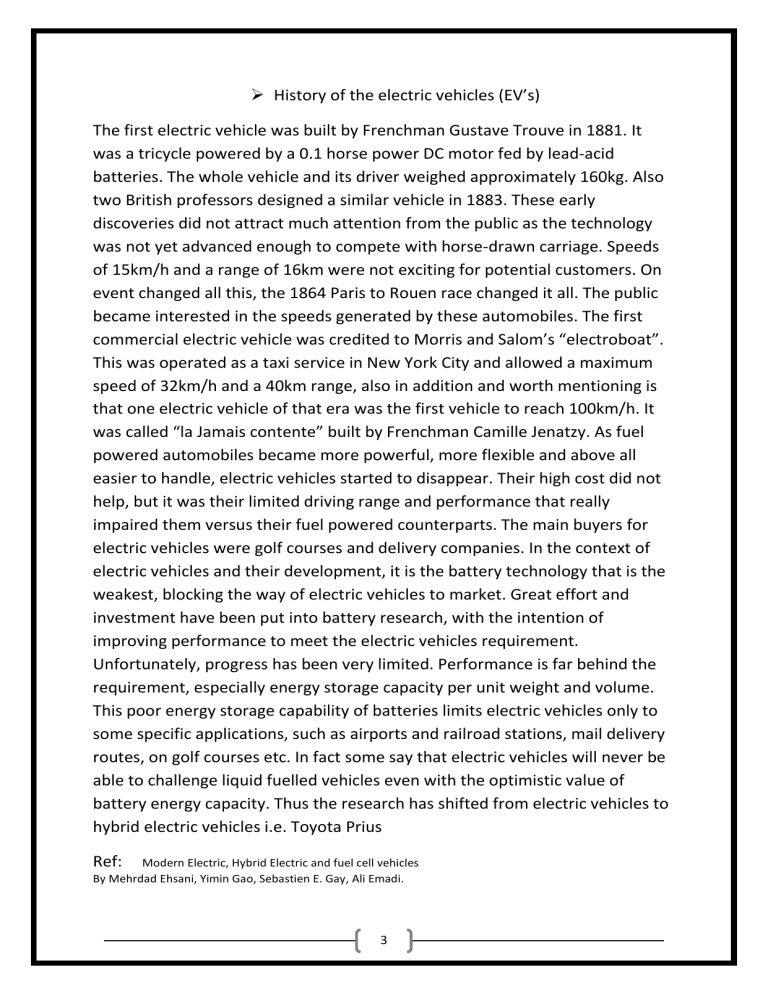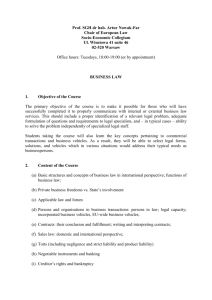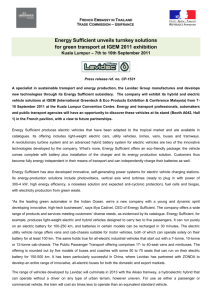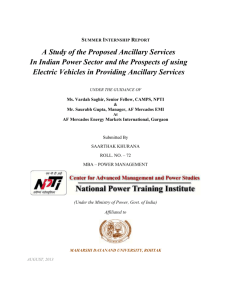History of the electric vehicles

History of the electric vehicles (EV’s)
The first electric vehicle was built by Frenchman Gustave Trouve in 1881. It was a tricycle powered by a 0.1 horse power DC motor fed by lead-acid batteries. The whole vehicle and its driver weighed approximately 160kg. Also two British professors designed a similar vehicle in 1883. These early discoveries did not attract much attention from the public as the technology was not yet advanced enough to compete with horse-drawn carriage. Speeds of 15km/h and a range of 16km were not exciting for potential customers. On event changed all this, the 1864 Paris to Rouen race changed it all. The public became interested in the speeds generated by these automobiles. The first commercial electric vehicle was credited to Morris and Salom’s “electroboat”.
This was operated as a taxi service in New York City and allowed a maximum speed of 32km/h and a 40km range, also in addition and worth mentioning is that one electric vehicle of that era was the first vehicle to reach 100km/h. It was called “la Jamais contente” built by Frenchman Camille Jenatzy. As fuel powered automobiles became more powerful, more flexible and above all easier to handle, electric vehicles started to disappear. Their high cost did not help, but it was their limited driving range and performance that really impaired them versus their fuel powered counterparts. The main buyers for electric vehicles were golf courses and delivery companies. In the context of electric vehicles and their development, it is the battery technology that is the weakest, blocking the way of electric vehicles to market. Great effort and investment have been put into battery research, with the intention of improving performance to meet the electric vehicles requirement.
Unfortunately, progress has been very limited. Performance is far behind the requirement, especially energy storage capacity per unit weight and volume.
This poor energy storage capability of batteries limits electric vehicles only to some specific applications, such as airports and railroad stations, mail delivery routes, on golf courses etc. In fact some say that electric vehicles will never be able to challenge liquid fuelled vehicles even with the optimistic value of battery energy capacity. Thus the research has shifted from electric vehicles to hybrid electric vehicles i.e. Toyota Prius
Ref:
Modern Electric, Hybrid Electric and fuel cell vehicles
By Mehrdad Ehsani, Yimin Gao, Sebastien E. Gay, Ali Emadi.
3
3











